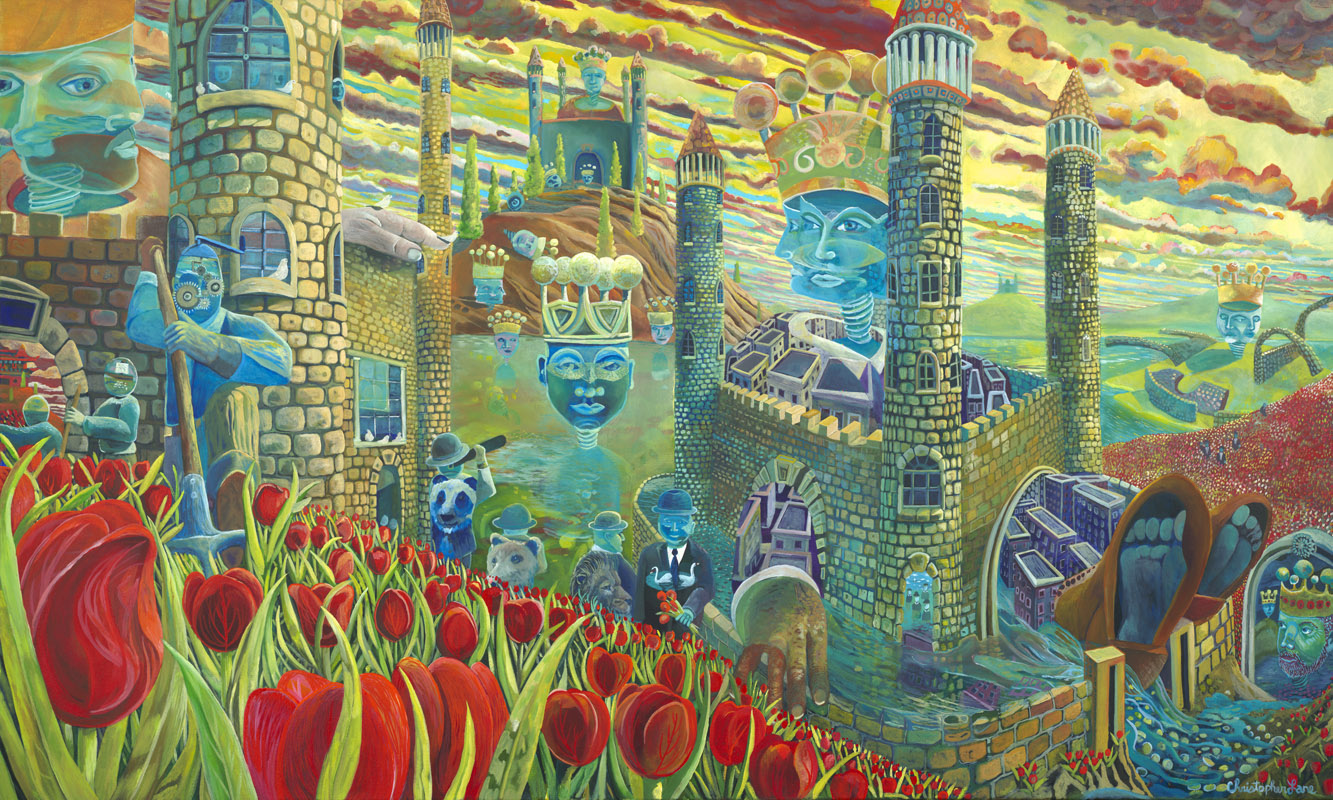Sold
Description of GeoPolitics
Original painting resides in the Jane Lafferty Collection (USA).
Limited edition prints available.
Geopolitics was inspired in part by a story my brother-in-law told me about how the people of Holland once based their currency on tulips. Tulip mania is a cautionary tale of what is widely regarded as the first recorded financial bubble and crash of all time. Of course, this resulted in financial ruin for many, as the bulbs that they had paid so highly for were worth virtually nothing.
This story is a common one throughout the world. Empires come and go. Leaders make promises with no intentions on keeping them. Each country has their own securities, their own version of castles with moats to protect it. Oftentimes, expansionism occurs, depicted here with the King shown as being too big for his castle. His arms and legs extending beyond their border walls, the gate broken, and the money from his coffers draining out with the water from the moat, all observed by the King of Corruption who watches from the right-hand bottom corner.
The small King in the top right-hand corner has a dried-up moat, a broken castle, and represents a country that no longer exists.
The leaders with their screw-top heads indicate the ease with which they can and are replaced. However, in doing so we think we’re getting a greater leader and it’s often more of the same. Some Kings are two-faced to reflect the ease in which they tell us what we want to hear.
Finally, in the bottom center of the painting are four Mr. Moneybritches’ characters. These are the wealthiest men of the world who are really calling the shots. Each of the four represents a different country reflected by the animal on their clothing. The bear represents Russia; the Panda, China; the lion Europe; and the swans represent Holland.
We the people are toiling the fields, almost robot-like, blindly following the leaders to our ruin.
